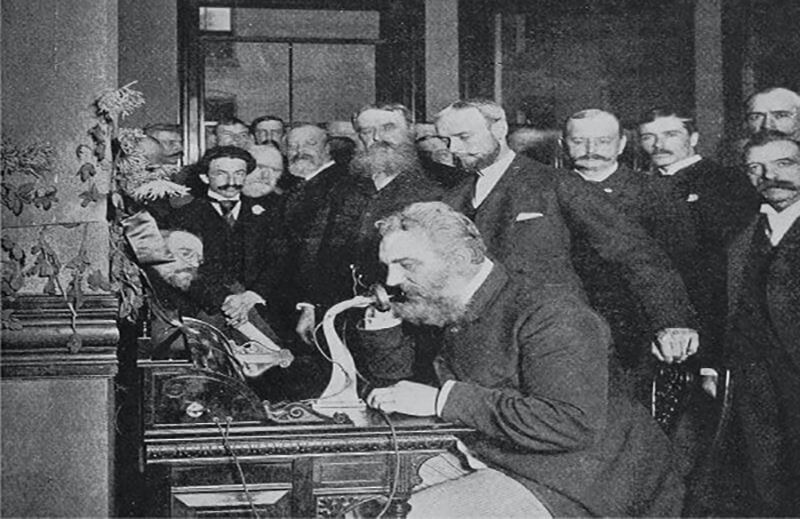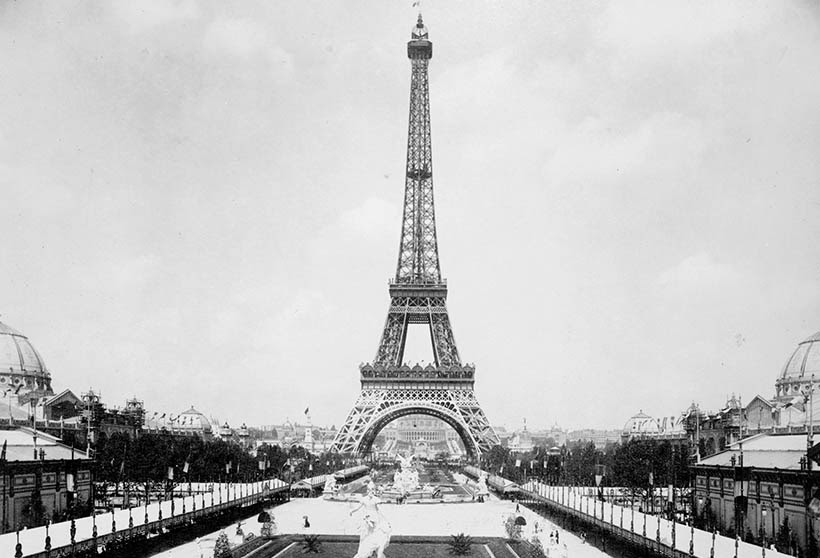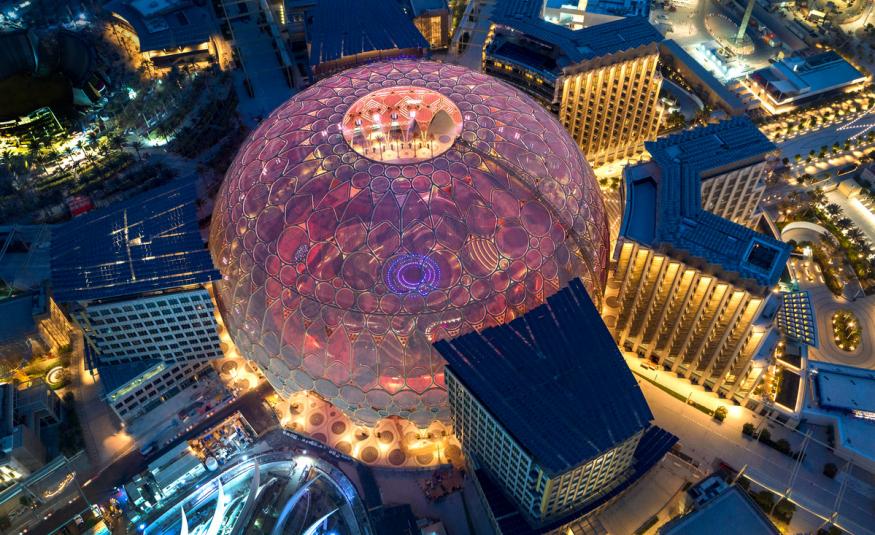During its history and exclusivity, the Expo exhibitions have also been a great stage for premieres of various attractions, which we take for granted today.

150 years of interesting things
Throughout their history, these exhibitions have been inextricably linked to the Industrial Revolution, enabling countries to showcase their culture and power and to show their architectural and technological prowess. They revealed inventions such as the telephone, typewriter or elevator, but also the latest architectural technologies in the form of the Eiffel Tower and the Statue of Liberty.
Here are some other points of interest throughout history:
1876 – Philadelphia, Centennial Exhibition
Alexander Graham Bell demonstrated the world’s first telephone and new dishes such as popcorn and Heinz ketchup were also shown to the public for the first time.
1878 – Paris, Exposition Universelle 1878
Henri Giffard’s huge steam-powered airship carried visitors up to 600 meters above Paris.
1880 – Melbourne, Melbourne International Exhibition
The Expo was an opportunity for Melbourne to develop its infrastructure and industry, which allowed the city to install electric lights, telephones, elevators and a tram system.
1889 – Paris, Exposition Universelle 1889
The main symbol of the fair was the Eiffel Tower. It wasn’t immediately popular and some people campaigned for its dismantling after the exhibition closed.

1893 – Chicago, The World’s Columbian Exposition
To the great delight of visitors, the first Ferris Wheel in the world was installed.
1900 – Paris, Paris Exposition 1900
The first Paris Metro line between Porte de Vincennes and Porte Maillot was opened specifically for the Expo.
1905 – Liège, Exposition Universelle et Internationale de Liège
Among the most important were the fingerprint magnifier presented by the Paris police as well as Leon Gaumont’s chronophone projector, which was one of the first devices synchronizing film with sound.
1935 – Brussels, Exposition Universelle et Internationale de Bruxelles
The Lancôme Company exhibited its first perfumes and the chocolate manufacturer Côte d’Or produced chocolate miniatures to be used as samples.
1939 – New York World’s Fair
This Expo was based on the future with the slogan “Dawn of a New Day” and it presented the first television broadcast to be seen by the mass public for the first time.

1958 – Brussels, Expo 58
A high level of new technologies was exhibited, such as the facsimile of the Soviet space rocket Sputnik, models of nuclear power plants as well as instruments and components made of synthetic materials, automated machines, new engines and computers.
1962 – Seattle, The Century 21 Exposition
The Space Needle, designed by John Graham and Edward Carlson, was presented at the Expo. It was a 185-meter-high tower with a revolving restaurant at the top, which could be reached by outdoor elevators resembling space capsules. The first computers were exhibited in the IBM building.
1970 – Osaka, Expo ‘70
Among the most remarkable exhibits were an electron microscope with up to 500,000 times magnification and a model train with an electromagnetic pad capable of traveling at speeds of up to 500 km/h. There were also samples of lunar rocks.

Sustainable development and education in the spotlight of Expo
Over the years, BIE has adapted Expo exhibitions to the needs of the ever-changing world. With the growing interest of international organizations in social and economic inequality and with new environmental awareness, it wasn’t enough just to showcase industrial progress, and by bringing together the international community, Expo has become a unique platform for education and development.
After setting education as the primary goal of the exhibition in 1972, the BIE issued a resolution in 1994 stating that the exhibition must address the fundamental problems of our time and the problems of environmental protection. Since then, the main goal for Expo has been sustainable development.
The success of the Expo brings new member states to the BIE
Since 1931, BIE has regulated more than 50 exhibitions, each of which attracts millions of visitors. In 2010, Shanghai broke the record with 73 million visitors.
The success of these events, independence of new countries and the era of globalization have opened up the world of Expo to Asia, the Middle East and Africa. Today, 170 countries are members of the BIE.
Attendance, transport and area
It’s known that world exhibitions are visited by an average of 200,000 people and more a day. And about 50 to 70 million visitors during their six-month duration. Montreal Expo 67 attracted 54 million visitors, Osaka Expo ’70 64 million visitors, Seville Expo ’92 41 million visitors and Shanghai Expo 2010 attracted 70 million visitors.
As a result, transport and other infrastructure at the registered exhibitions is an important issue (the Seville Expo in 1992 boasted a cable car, monorail, a ship and a bus) and the total cost of hosting and representation at the world exhibition is quite high.
World exhibitions are also massive in size. Sometimes they cover an area of 300 or 400 hectares (Montreal Expo 67 was 410 hectares, Osaka Expo ’70 was 330 hectares, Seville Expo ’92 was 215 hectares). The pavilions that take part in the World Expo can also be large, sometimes 5,000 to 10,000 square meters in size, they are mini city blocks in themselves and can sometimes be several floors high.

Expo Dubai 2020
Expo Dubai 2020 is currently underway, covering an area of 432 hectares, boasting the largest elevator in the world (of course), beautiful pavilions and many other attractions, which we’ll talk about in the next section. The main theme is “Connecting Minds, Creating the Future”. Connecting and creating a better future is close to our DNA in bart.sk. As an exhibitor, we took this opportunity to shoot a 2-minute video showing how our digital products improve life in the areas of health, sports and e-commerce and thus contribute to improving the future of us all.







